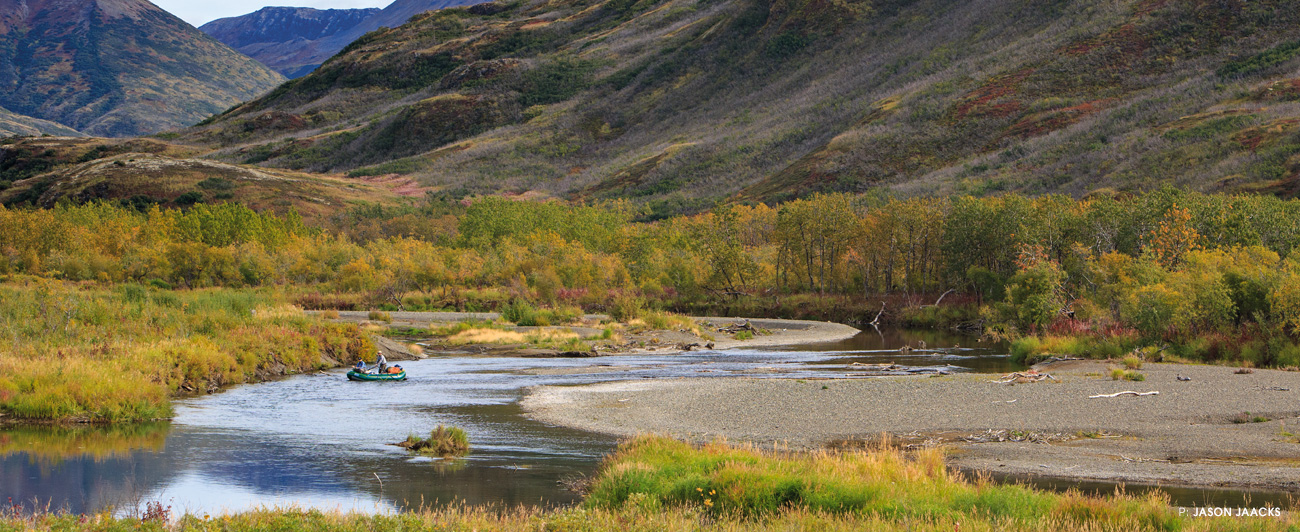Adventure
You Are Now Alone
Alaska’s Togiak Wilderness by Raft
above By mid-September, the nights turn cold and the river valleys of Alaska’s Togiak National Wildlife Refuge display the reds and golds of autumn—at least that’s what the pictures looked like after we got home. We spent the entire time staring into the river.
I watched the Mylar strips dance through the clear water in the low autumn light. It cruised toward the surface, tempting anything in the depths to come up and eat. “Reset,” I whispered. Jason flicked the rod and shot the fly back to the far side of the pool. The fly slapped the water, sinking fast. A shadow of scales and muscle rocketed from the deep water, crushing. Coho. Jason set the hook like he was trying to start an old mower. The surface erupted in a flash of silver. The reel howled as the buck ran up and down the river, circling the raft and bringing chaos with him. Jason worked the fish away from the anchor line while I tried my best to keep the oars out of the way.
A few lawless minutes later, I dipped the net underneath. High fives. I snapped a photo of Jason with his first bright coho, a broad grin plastered to his face.
Our journey to find this fish had been long.
“So let me get this straight. You’re here… to pick up some guys?” I stared at my own reflection in a pair of aviator sunglasses.
“Yeah,” I answered. “This road only goes to the airport and we have guys coming in on the next flight.”
Rain pattered steadily on the cracked windshield. I let out the clutch and cranked down the window a little farther. The smell of aviation fuel and the sound of propellers kicking to life filled the cab. I looked across the bucket seat at John and he was just as surprised as I was to see the Secret Service blocking the only road to the Dillingham, AK airport.
John and I earn our living rowing rafts. We spend summers guiding anglers in the remote wilderness of southwest Alaska, fishing our way from alpine headwaters to salty estuaries on the salmon streams of Bristol Bay. For three months a year, we call the wide-open tundra of the Togiak Wildlife Refuge our home.
When you step off the plane in Dillingham, our base of operations for the season, the modern world doesn’t come with you. You walk off the runway and into the small terminal, past the commercial salmon fishermen wearing tall rubber boots and smoking cigarettes, past the sport-fishing guides in trucker hats picking up guests. You grab your checked bag off of the dusty floor and walk out into the dirt parking lot, hoping someone is there to pick you up because your cell phone won’t work with the local carrier. Life is simpler here.
When you step off the plane in Dillingham, our base of operations for the season, the modern world doesn’t come with you.
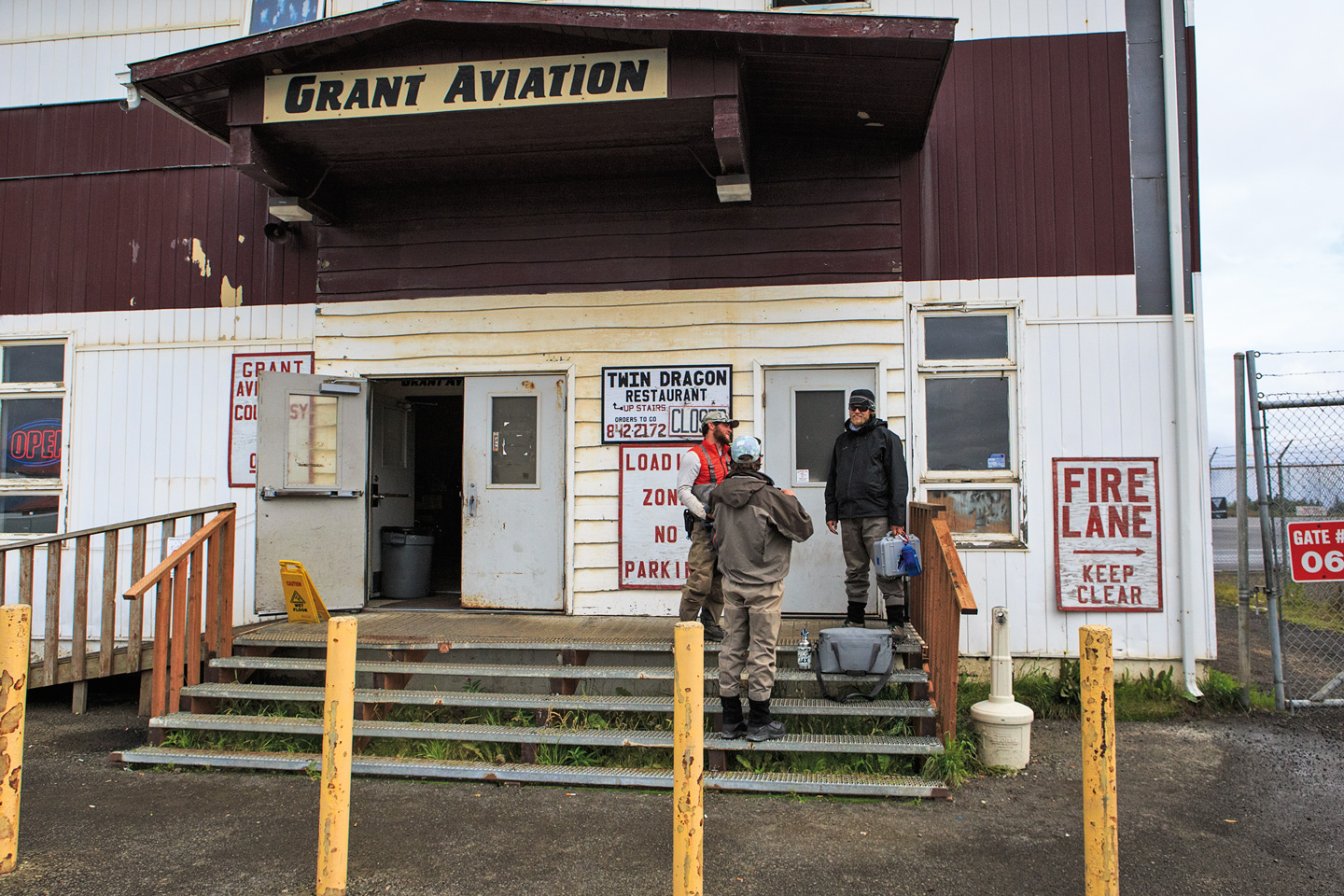
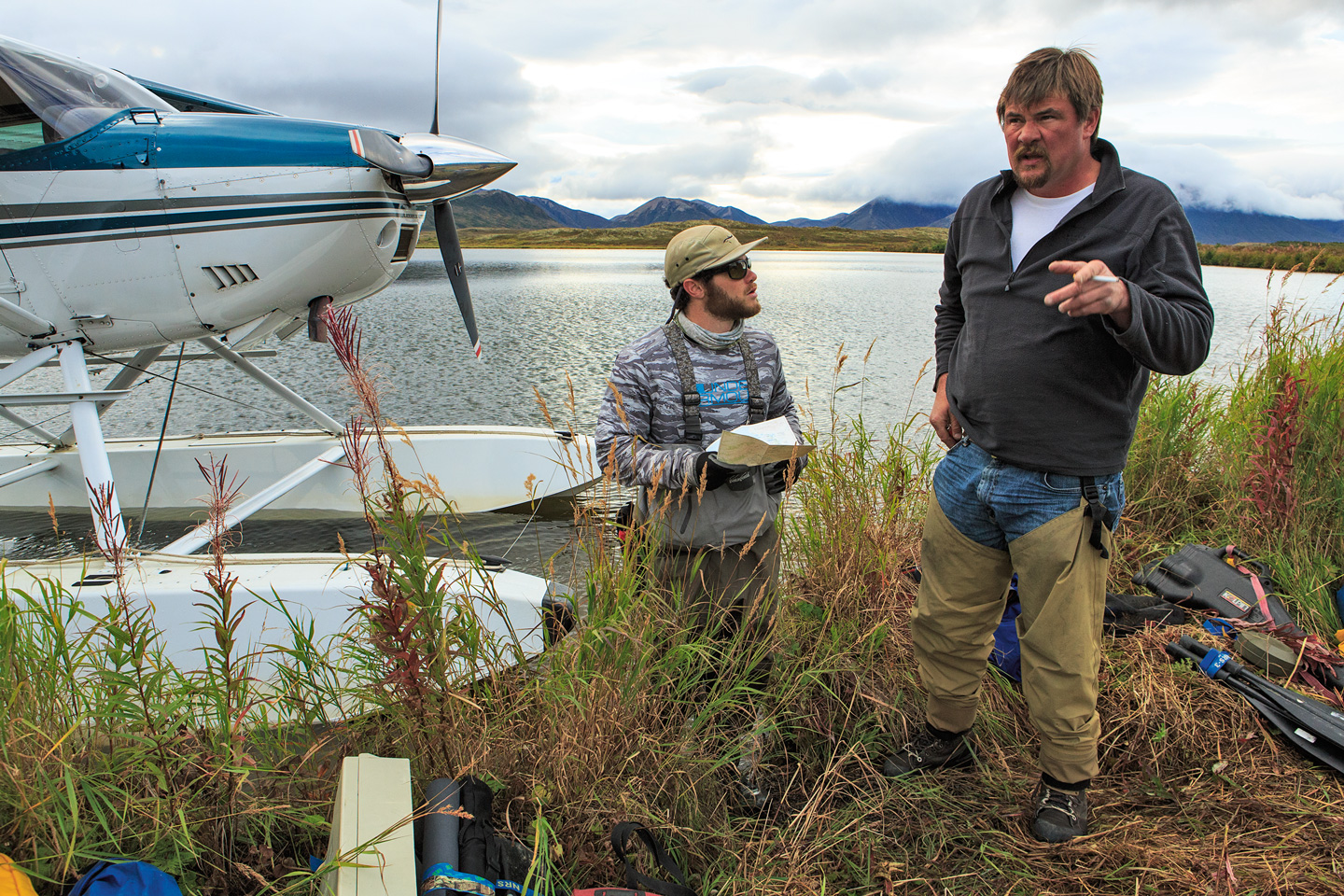
above top The airstrip in Dillingham, AK, wasn’t built with presidential visits in mind. But I do wonder if former President Obama tried any of the fare at the Twin Dragon during his afternoon visit to Dillingham.
above bottom After dropping us off high up in the watershed, bush pilot Mike Hink shares some advice and a smoke before buzzing back into the sky. When the plane rounded a far ridge, the only thing left was silence. We knew we had come to the right place.
At least that’s how it is on a normal day. The Secret Service had been scurrying around this small coastal fishing town for the last few weeks. President Obama was coming to Dillingham. Traveling around the state speaking to small communities about climate change and the blocking of the proposed Pebble Mine. Federal agents had doubled the town’s population. They swarmed Dillingham’s airport, waiting to shut down the airspace for the arrival of Air Force One.
The humorless Secret Service agent was unconvinced. We were a threat. He was not about to let two bearded guys wearing dirty waders and driving a rusty pickup through his security line. “Stay here.” He walked back to confer with other agents. At least we had remembered to take the shotguns out of the truck this morning.
September, our guide season complete, John and I had planned a postseason trip to wrap our year. We recruited my brother Jason to come along and photograph. He was on the last plane into town the morning before Obama’s visit and John and I were trying to talk our way through the Secret Service mob to pick him up. After talking with the other agents and deciding they had enough firepower to handle us if we strayed, the agent barked, “OK, straight to the terminal. Be quick about it.”
I parked the truck outside and killed the engine. “You can’t park here!” yelled another trench coat. He was unaware of my new security clearance. John had already walked into the terminal and collected Jason. “We’re all packed and good to go, but the weather is supposed to turn ugly this afternoon, so we’re hoping to get out early tomorrow,” I told my brother. He’d jumped on a redeye to get to Dillingham. Wiping the sleep out of his eyes, he threw his bag in the pickup.
There is one reliable rule about flying in Alaska: You can’t beat the weather. It is a rule I’ve learned after hours spent trying to convince clients that the weather will pass and we’ll get out and fish. I clicked refresh. The radar image on the computer screen in front of me reloaded slowly, pausing while the limited bandwidth struggled to catch up.
Hours after we cleared the Secret Service roadblock and made our airport pickup, a storm had blown in off the Bering Sea. Fog and rain had prevented us from flying through the western mountains to our creek. Fog covered the entire coast of Bristol Bay, crushing my hope that I would sleep in a riverside tent that night. I lifted my coffee, our pilot’s words echoing, “If you haven’t heard from me by three, we’re a no go.” Three thirty. Damn. I refilled the cup with whiskey.
I stared at the untamed creeks and rivers on the map. A geologist client once described the way the glaciers of the last ice age carved out valleys leading to the sea. They left deep lakes in the headwaters and a shallow gradient for rivers to gently meander to the estuary. Mountains ground down from the glaciers formed perfect-sized pebbles and sediment to line the river bottoms. The glaciers melted away, leaving crystal-clear, rain-fed rivers teeming with life. Perfect spawning habitat and the most prolific salmon fishery in the world.
John and I had spent the whole guide season peering out the window of a Cessna at a trickle of water that runs directly to the sea, scheming about how to get a boat down there. Now we sat warm and dry, plotting how we were going to get wet and cold. “Hopefully we get out tomorrow,” John said to no one in particular. “We don’t have the whiskey ration for another weather day.”
John and I had spent the whole guide season peering out the window of a Cessna at a trickle of water that runs directly to the sea, scheming about how to get a boat down there. Now we sat warm and dry, plotting how we were going to get wet and cold.
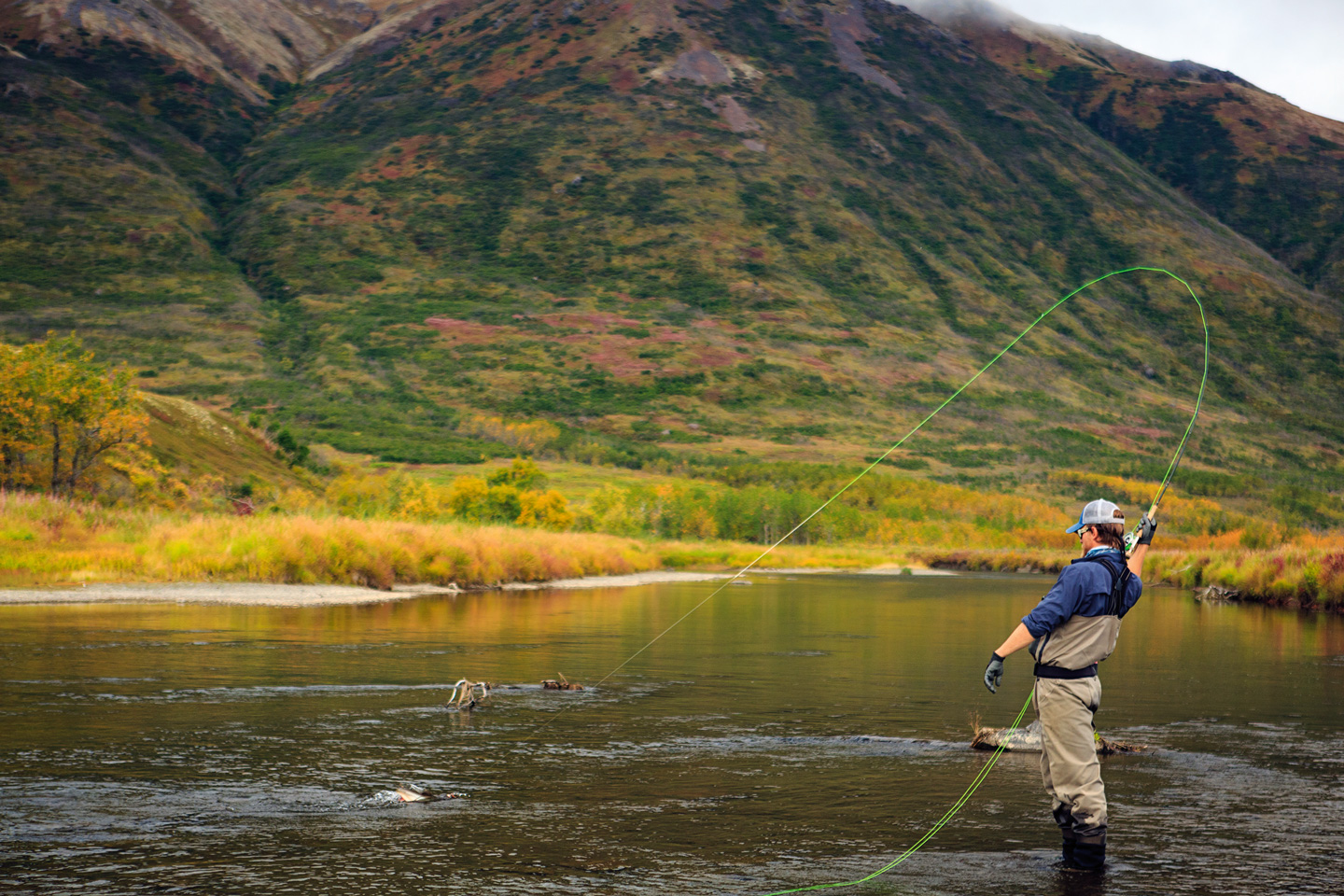
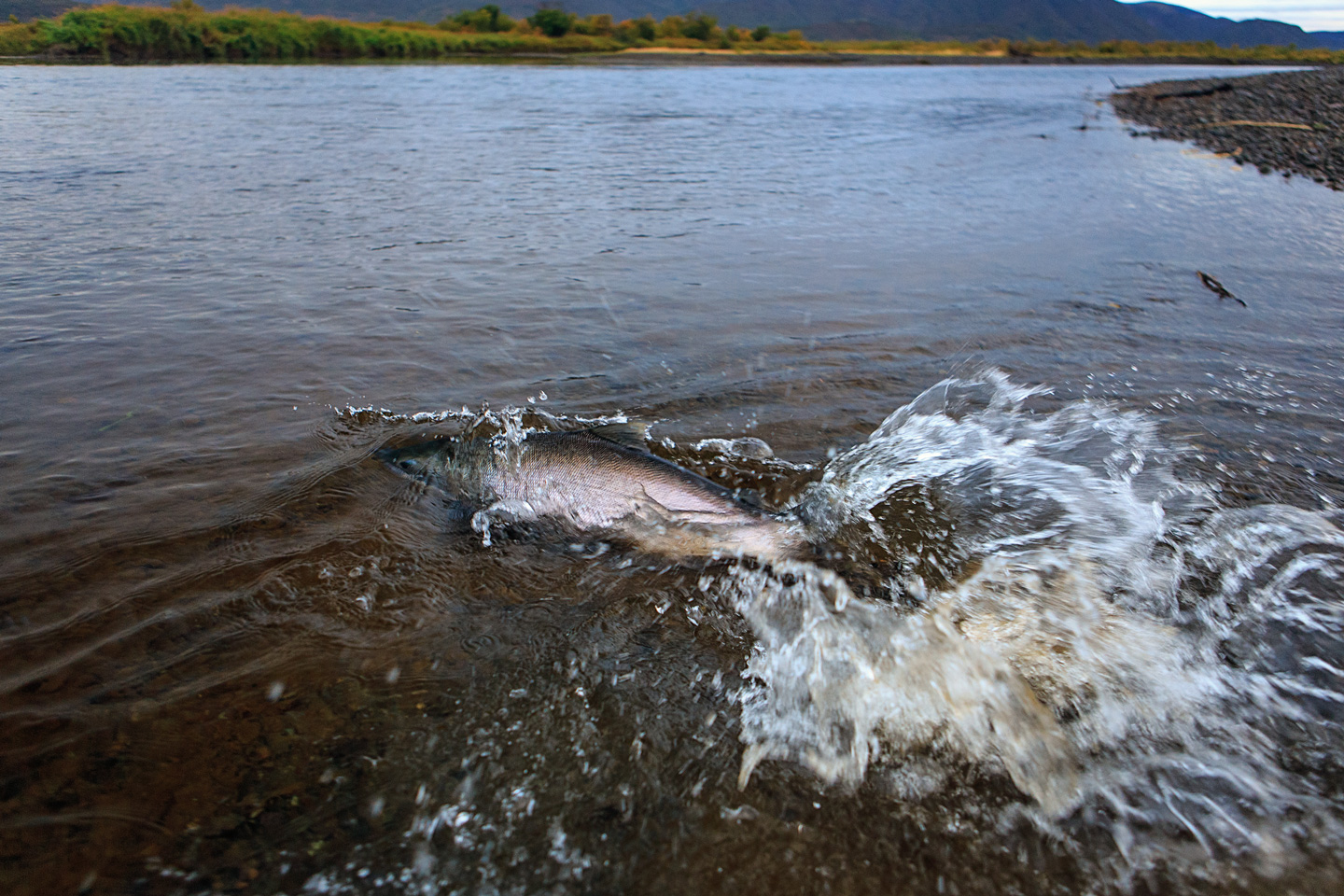
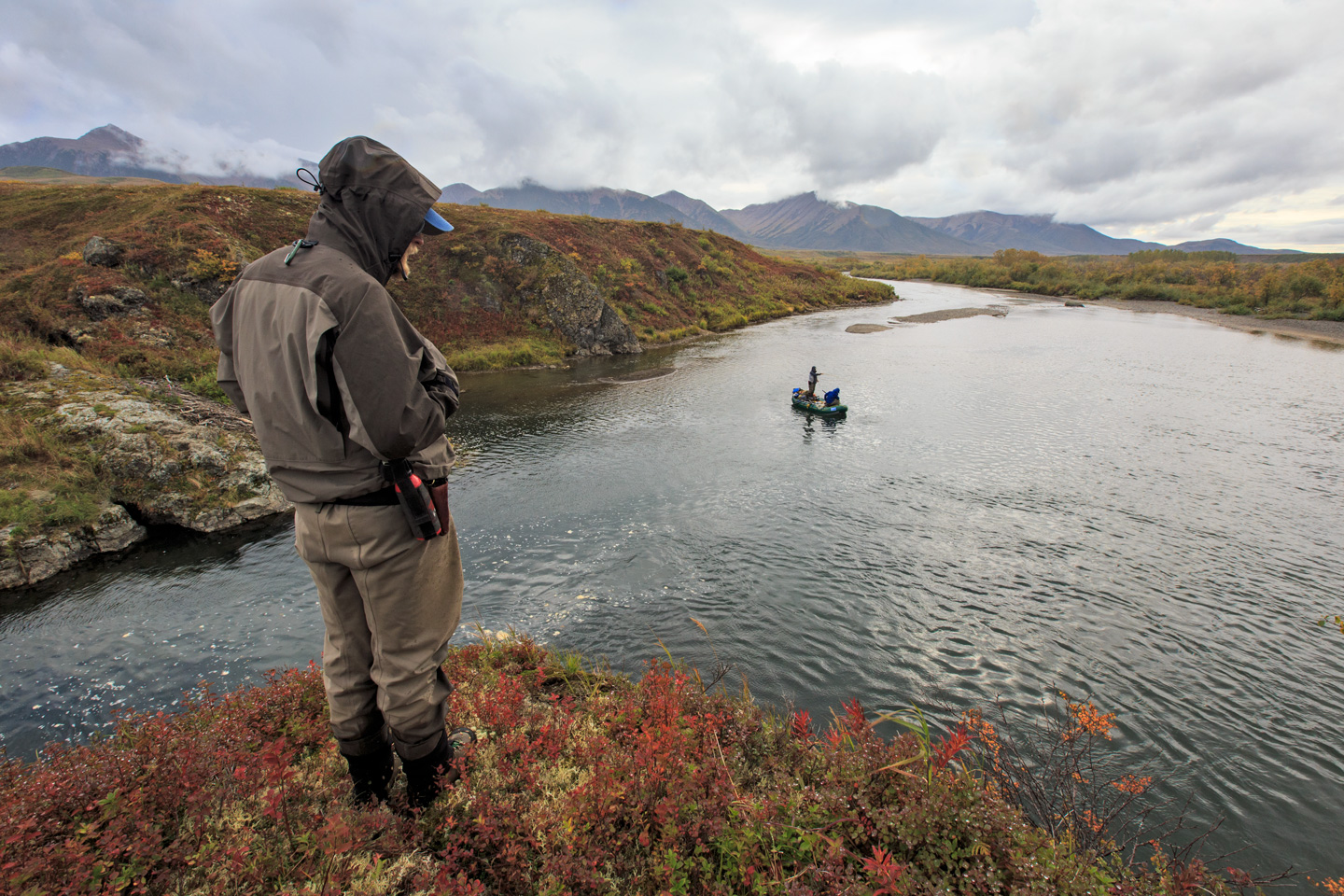
ABOVE TOP to bottom After all of the planning, travel, waiting and waiting some more, it comes down to a tenuous connection with a wild fish. Peter Jaacks swipes right on gorgeous silver.
Six pounds of ocean-fed muscle jets off after John Jihishian brought it to shore for an inspection. This was the last fish of the trip and we stood together on the bank and watched as it rocketed back into the current.
Bear spray at the ready, Peter Jaacks enjoys an autumn day in Bristol Bay featuring colored-up tundra, a storm on its way out of the watershed and good friends making casts to bright coho.
I didn’t open my eyes when I awoke, the quiet of the morning reflecting the silence of my thoughts. Silence meant no raindrops on the roof. No raindrops meant no rain. No rain meant… I ran outside and stared at the sky. I saw nothing but the brilliant azure of an Alaskan sunrise. The storm had blown itself out. By the time I got back inside to spread the news, everyone was up and moving. They had already figured it out. We’re going.
When we got to the floatplane, our pilot was raring to go. “I’m backed up four days because of the goddamn air-space shutdown. People were already late because of that, then the storm on top of it….”
“Just looking out for Air Force One security, I guess,” John shrugged.
The pilot shot him a dubious glare. “Security? You could shoot this goddamn thing out of the air with buckshot!” He kicked the engine to life and the roar drowned out the rest of his tirade. Minutes later we were cruising above the tundra.
The plane touched down on our unnamed lake and then became a small dot flying into the distance. There’s a certain feeling when a floatplane drops you off in Alaska—a feeling that screams, “You are alone now. Very, very alone.” Your connection to the outside world buzzes away through the clouds—no other humans for hundreds of miles. All you can hear once the drone of the propeller fades is the breeze cutting across the tundra and your own breath. We basked in that feeling, all thinking the same thing: We made it. Finally.
John pulled out the map and looked around. “We can drag down this creek,” he said pointing south, “or we can row across the lake and do a longer portage. If we take the long way, we gain more river miles to fish.” There was no pause. The long way!
There’s a certain feeling when a floatplane drops you off in Alaska—a feeling that screams, “You are alone now. Very, very alone.”
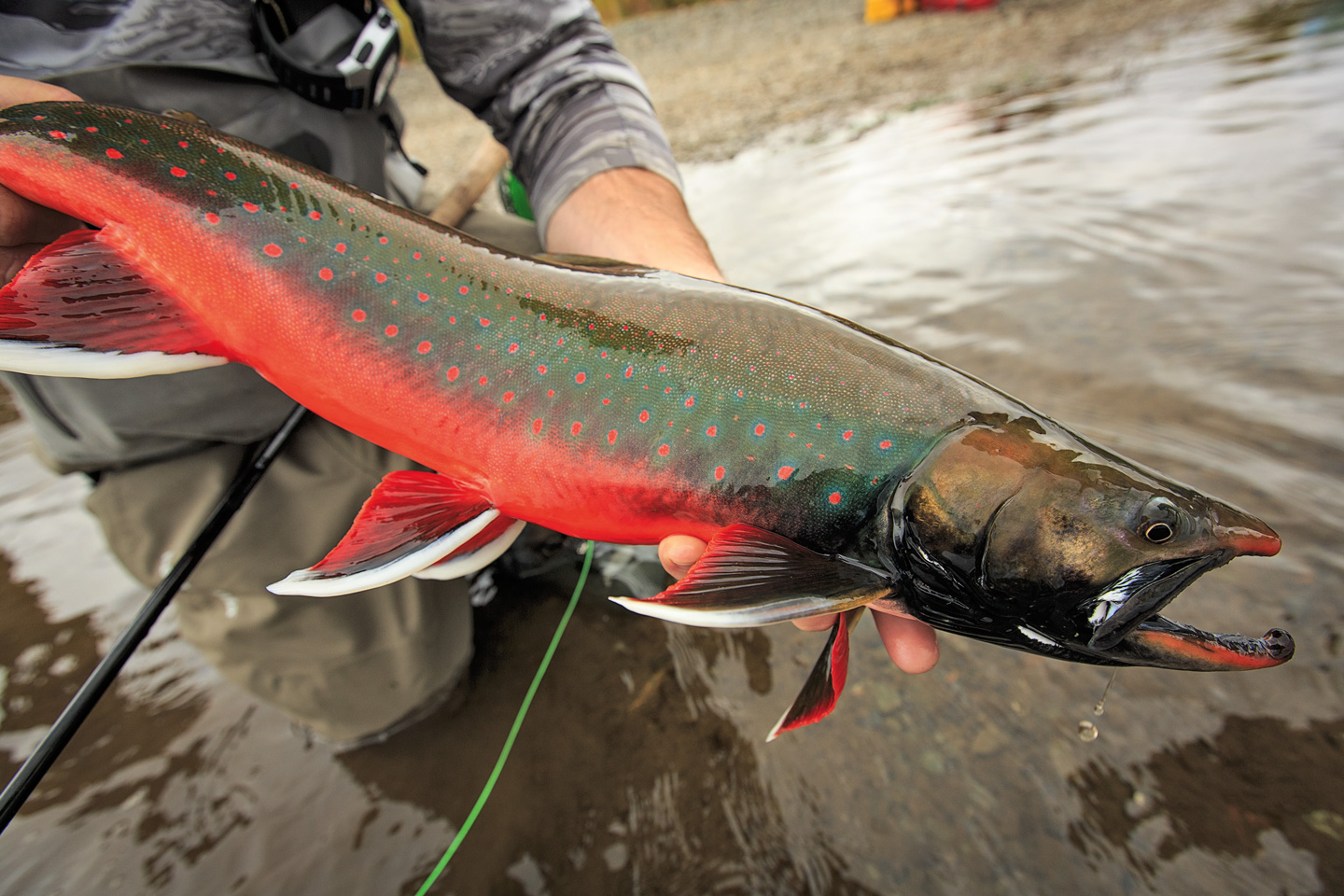
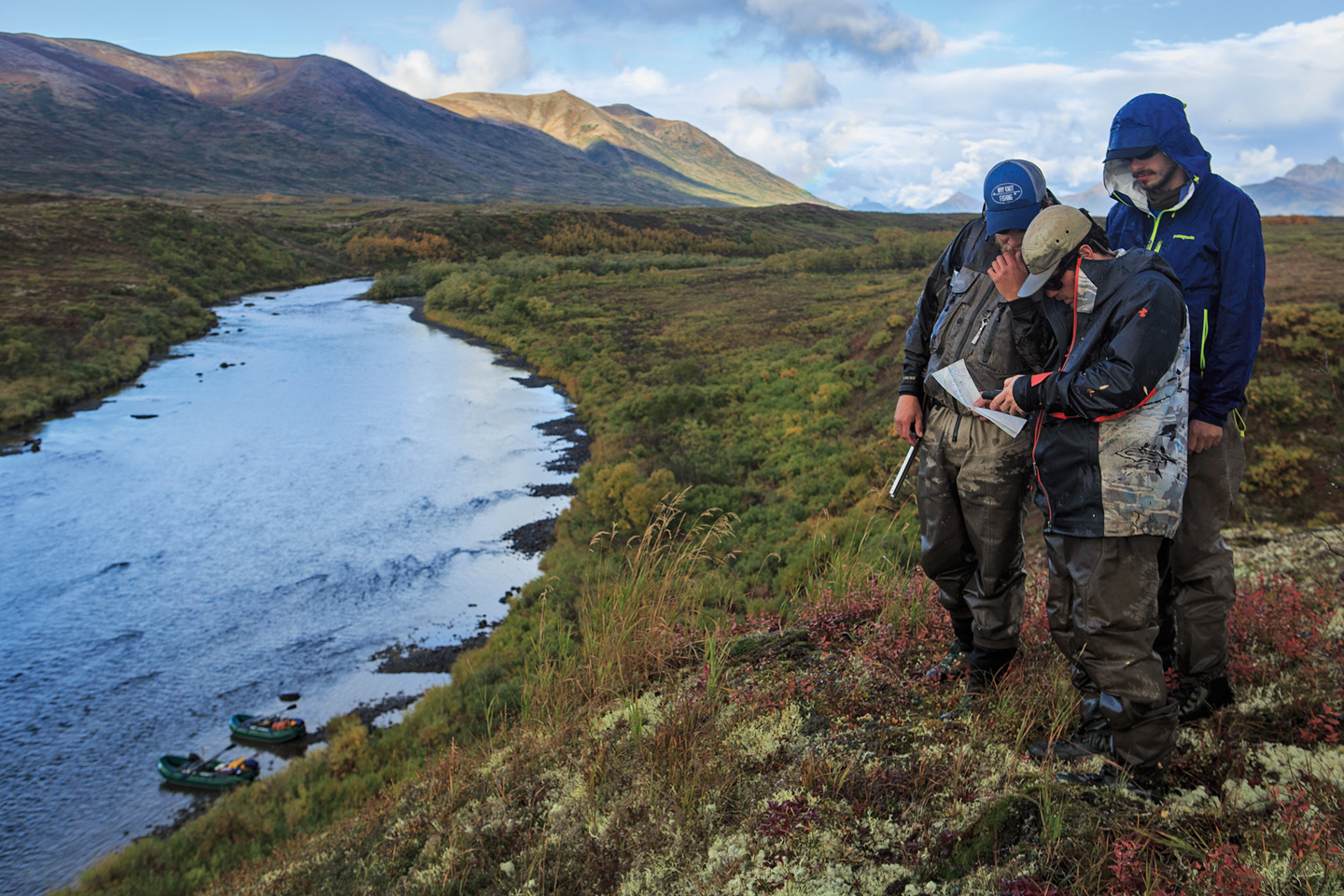
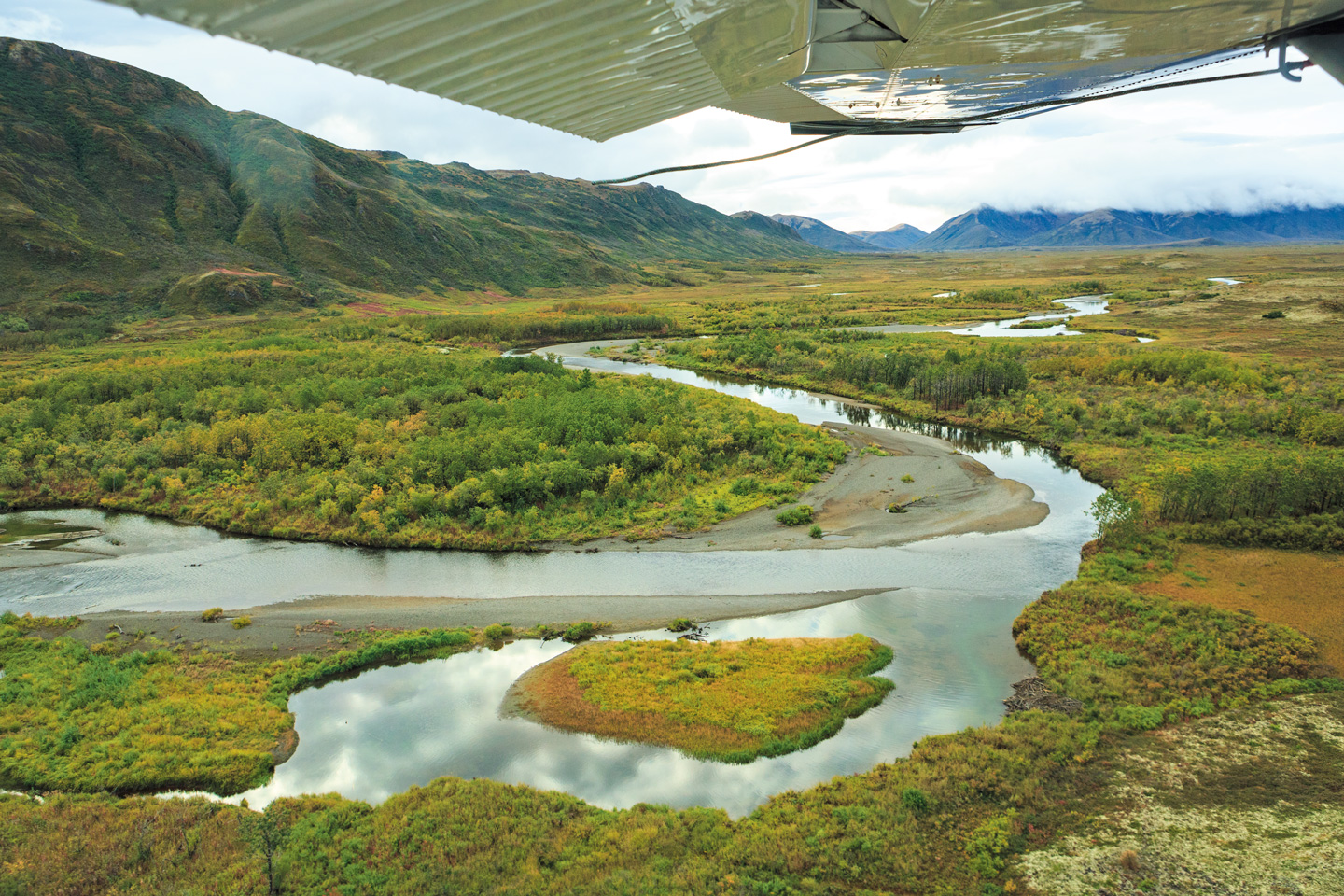
ABOVE TOP TO BOTTOM John Jihishian assists an Arctic char during its paparazzi moment. Colored up for the spawn, no fish shines brighter.
After a couple of days drifting downriver you lose track of time, the world and your place in it. Peter Jaacks, John Jihishian, and Nik Pejovic perch atop a bluff to scout the next couple of bends and make sure they’re not lost.
Even with the roaring Cessna engine, the view out the window makes you feel like you’re floating above the ridges and rivers of the Togiak National Wildlife Refuge. The awesome beauty of nature is everywhere here.
Portage. Fun to say, not fun to do. We rowed the rafts across the lake and dragged them across the tundra, trudging up and down hills and negotiating ankle-breaking tussocks and hidden sinkholes. After finding a suitable place to launch, we made round after round carrying bags and gear. Sweating through my waders, I regretted bringing so many extra layers as the portage straps of my dry bag dug into my shoulders. After hours of ferrying gear, we were all still pushing to get on the river. We rigged rods and shoved off.
This was a river we knew little about. We had no idea how it fished late in the season. We clung to the flyfisherman’s faith in things unseen, but the fishing was painfully slow the first few hours on the river. We spotted a few small pods of colored-up coho mixed with Dolly Varden char, but none of them were interested in chasing a fly.
Our raft crunched into the gravel of the shallow river bottom. Jason hopped out and began to drag us through the shallows. I grabbed the towline and begin to pull myself, scanning the water for a black tail or a flash of silver. We only had to drag the rafts through shallows a handful of times, but the bright pods of coho evaded us. I was beginning to think we had missed the run.
Most of the fishing adventures I talk my brother into turn out to be long hikes into remote water ending with a lot of casting practice, few fish and a thorough understanding of all meanings of the word “waterproof.” I was eager to have this trip turn out differently. We kept covering miles with grim determination. “I wonder if we missed the run?” I muttered from the rowing seat. “Well, it’s still not raining,” Jason said, casting at the bank, “so we got that going for us.”
The autumn sun was low and the golden light reminded us that even though there might be more fish downriver, good camps were few and far between on our small creek. But before we unloaded the rafts onto a fine-looking gravel bar, I wanted to investigate a deep, suspicious-looking pool downriver.
I scanned from the rowing seat. Something was down there. Getting into position, I dropped our “anchor”—a surprisingly effective rock tied to a rope—and tied it off. “Just make a cast into the middle but let the fly sink a few seconds before you start to strip,” I said. I had a good feeling. Jason made the cast, dropping the fly and pausing while it sank.
Moments later, I had snapped the photo of Jason holding and releasing his first bright coho. The buck kicked quickly and swam away strongly. We quietly watched it return to the depths. Jason stared into the water for a few moments, then smiled and handed me the rod. “Your turn.”
Years of trips together spent soggy and cold, months of planning and scouting our creek, days of waiting out a storm, hours of portaging all boiled down to seconds of pure elation. Not even the Secret Service could block that.
I took the rod and lobbed the fly back into the pool. I stripped the fly fast, searching for the next fish. Another shadow came up from the deep. The line came tight and I set it as hard as I could. The coho flew out of the water, disrupting the calm that had returned only minutes before.
Snap! The second the fish landed back in the water, the leader broke. I looked downriver in disbelief. “Forgot to check the knot,” Jason shrugged, already reaching for a new fly.
John rowed up behind us and dropped his own anchor. “You’re in the penalty box!” He laughed and cast his own fly into the pool.
The farther down the river we went, the more fish we found. Gangs of silver stretched the full width of our small creek.
This was a river we knew little about. We had no idea how it fished late in the season. We clung to the flyfisherman’s faith in things unseen.
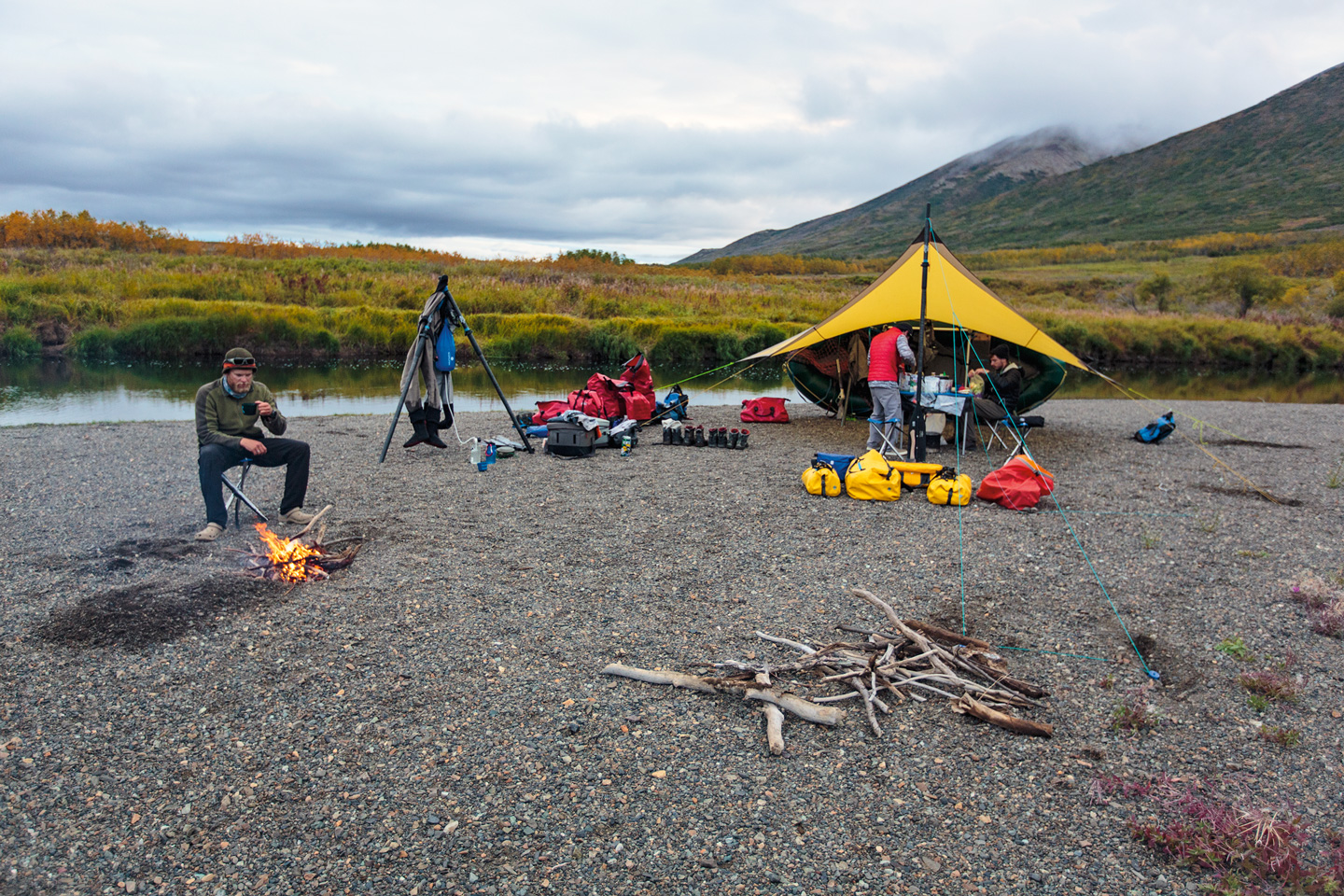
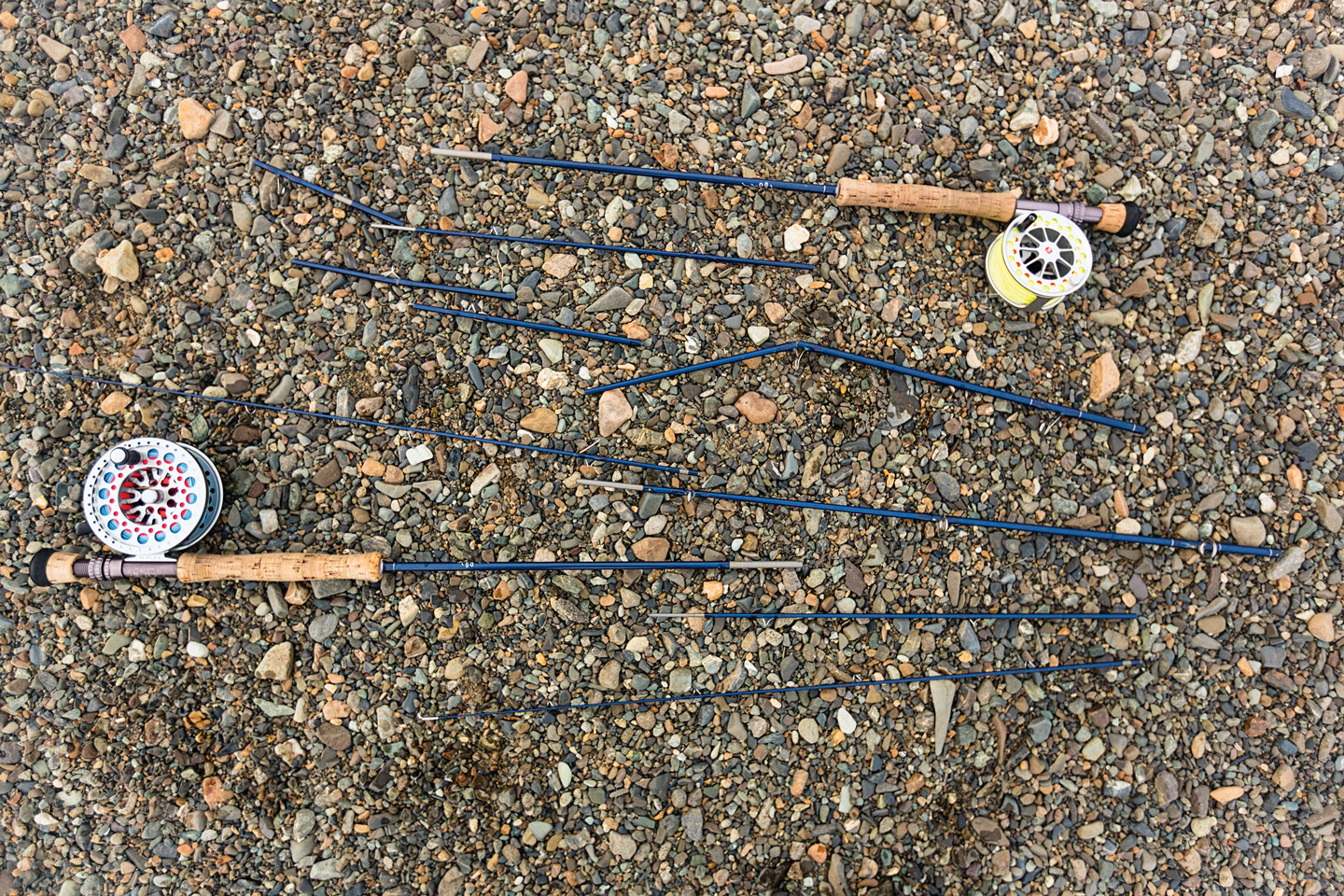
ABOVE TOP TO BOTTOM No lodge, no steak, no waitstaff—just four anglers sharing a rain fly, a couple sips of whiskey and the best late-season fishing any of us had ever seen.
The only two casualties of the trip, lost on a coho double hookup in a particularly busy beaver slough. One fish was landed with just the butt section while the other was netted after wrapping around an oar post. Heckling ensued.
We traveled through a landscape still untouched by the world that left with the floatplane. No fences. No power lines. No roads. Just quiet tundra and flowing rivers. When we snapped that first triumphant trophy shot, we thought the trip was a success, but it wasn’t until months later, dreaming of fall coho while in the grip of winter, when I realized that wasn’t why I continue to go back to Alaska. I was able to share with my brother the landscape I have come to love—the ups and downs, all the challenges and unique characters of western Alaska. We finally had a trip where we caught fish, but on our little creek, it hardly mattered. Just moving through tundra country together, stripping a fly through the clear waters of the Last Frontier is why we still talk about it, and always will.
We met our floatplane a few yards from where the river meets the Bering Sea, each of us contemplating the journey and the quiet landscape we were leaving behind. I stared out the window of the Cessna at the wild scene beneath me, mountains and rivers without end. The tundra was turning to red and orange, lighting up the horizon. Autumn had come, winter on its heels. We landed on the lake in Dillingham and it began to rain.
We finally had a trip where we caught fish. But on our little creek, it hardly mattered.
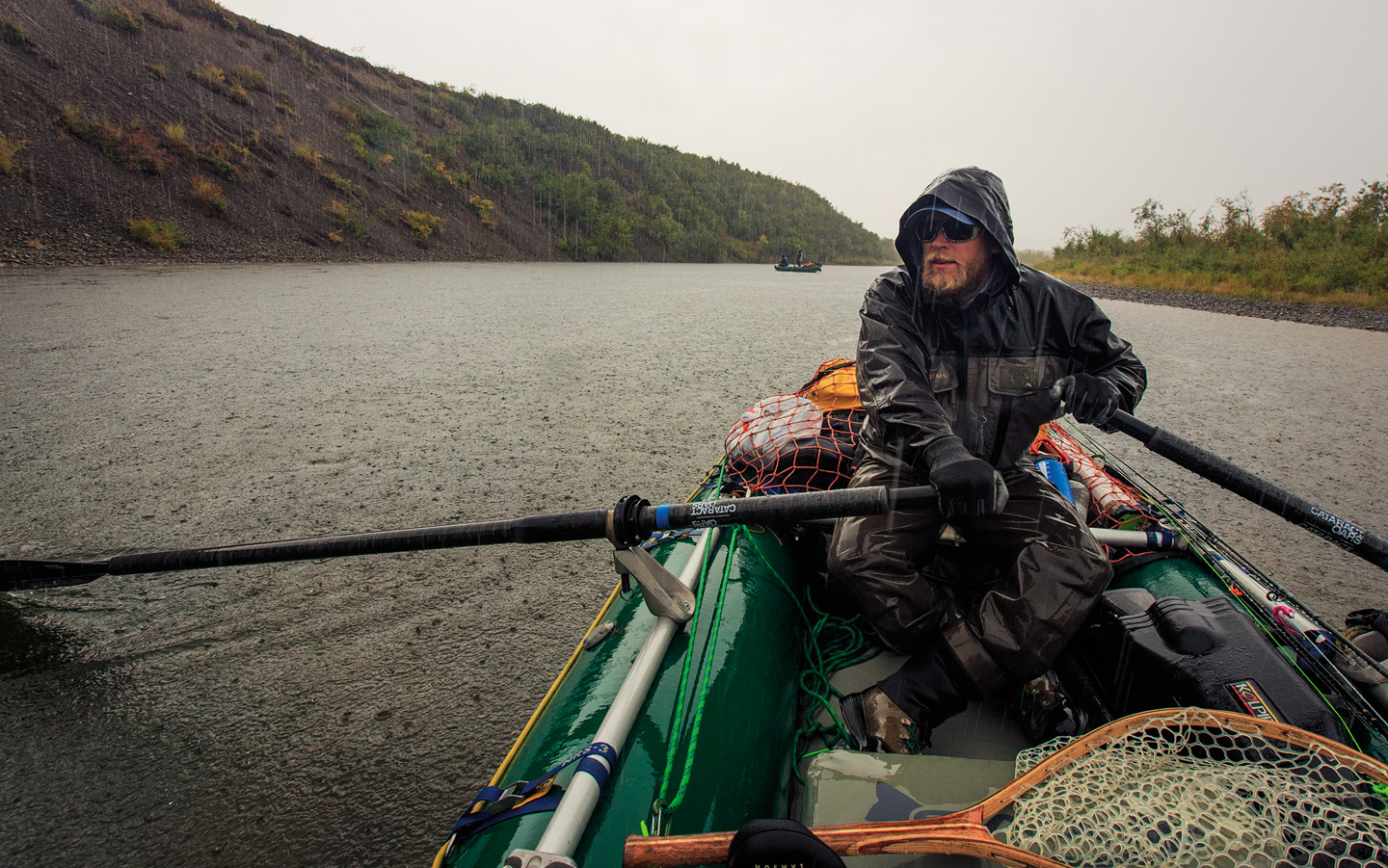
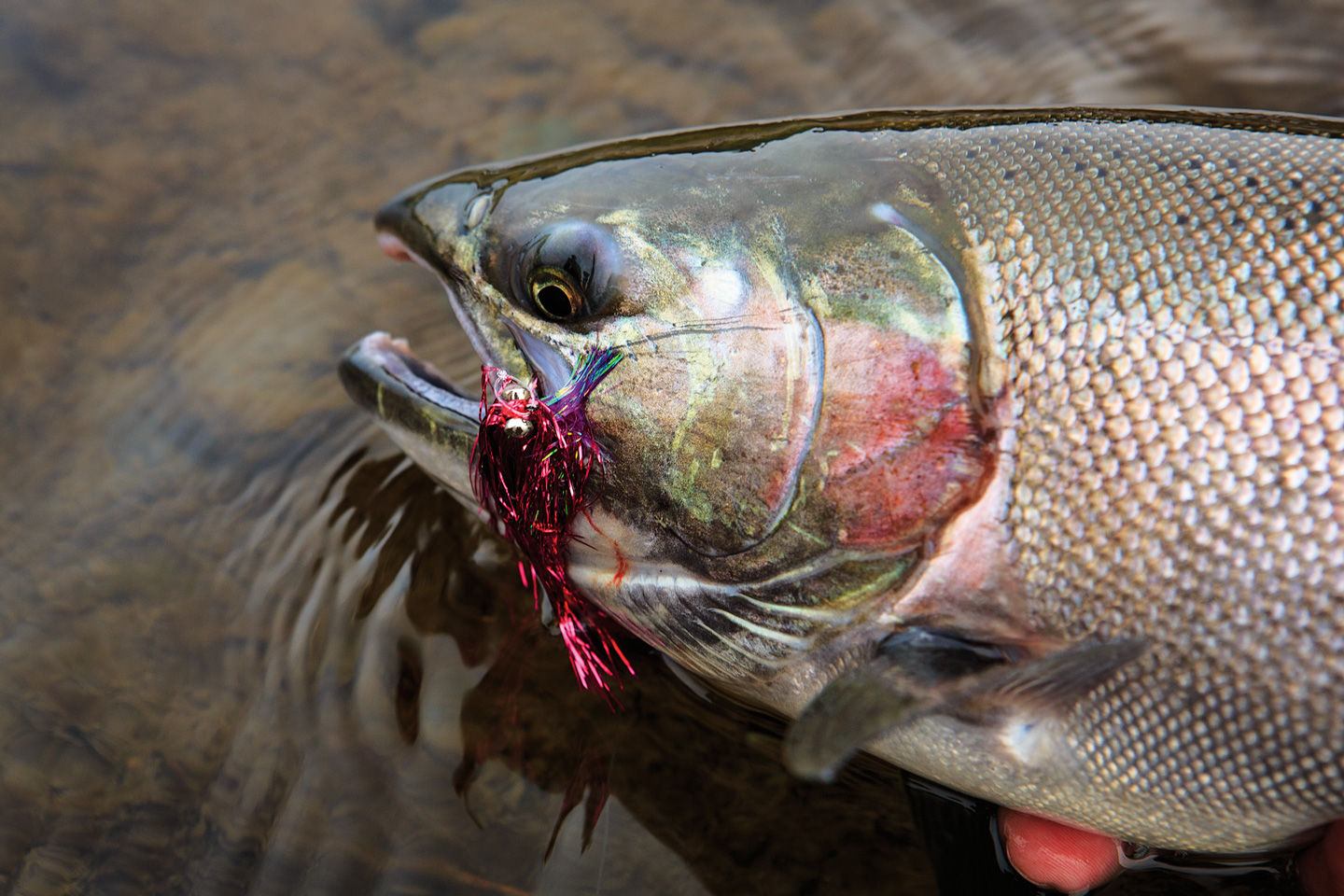
ABOVE TOP TO BOTTOM When weather comes to the Togiak, it comes in strong. Peter Jaacks keeps his hands on the sticks and his eyes downriver as we make up a few miles during an afternoon downpour.
All shoulders, chrome and pearl. This coho may have fallen for the Mylar flash, but I fell for coho because of the shine of their gill plates and the relentless fight in their hearts.
This story originally appeared in The Flyfish Journal Volume 9 Issue 1.
